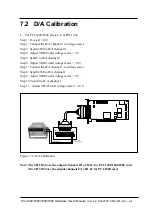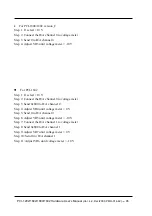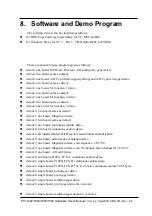
5.1 Introduction
z
What Is M_Functions?
The features of the M_Functions are given as follows:
1.
Arbitrary wave form generation from D/A output port (2 channels max.)
2.
Perform MagicScan A/D conversion at the same time (32 channels max.)
3.
Only one function call is needed
4.
Very easy to use
The user can send out the D/A wave form output to the external device and measure the
response(32 channels max.) at the same time. The block diagram of the M_Functions is given
as follows:
Figure 5-2: The block diagram of M-Functions.
M Functions
DA1
DA2
External Device
Input 1
Input 2
Response 1
Response N
ADn
AD1
z
Which types of waveform can be generated by the M_Functions ?
The M_Functions use
wave-form-image-data
format to reconstruct the output waveform.
Therefore nearly any types of waveform can be generated. The only limitations are resolution
and frequency. It is very difficult to generate a very high resolution and high frequency
waveform.
If the user want to generate the periodic wave form such as sine, cosine,...., the
M_Functions can provide the output wave form over 100 k Samples/sec. The +/- 5 V 100 kS/s
sine wave shown in Figure 5-3 and +/- 5 V 200 kS/s sine wave shown in Figure 5-4 are all
generated by M_Function1. The Figure 5-3 and Figure 5-4 is measured by Tektronix TDS 220.
The display resolution of TDS 220 is limited, so the output waveform does not look smooth.
The real output waveform is smooth.
PCI-1202/1602/1800/1802 Hardware User’s Manual
(
Ver.4.2, Dec/2009, PMH-014-42)---- 82
















































